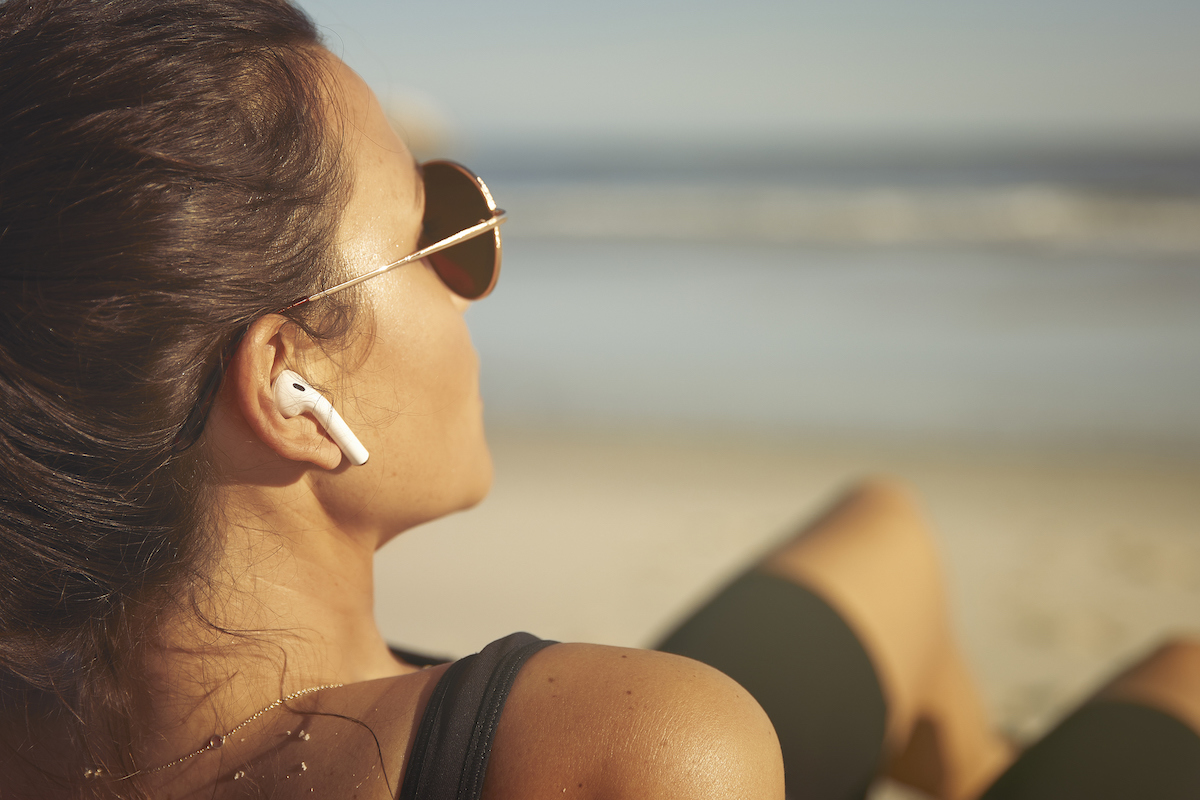<< Back
Swimmer’s Ear? Earbuds? The Ins and Outs of Ear Infections

July 14, 2021
Just back from a glorious beach vacation and now it feels as if there’s a bubble trapped in your ear. What did you just say? It itches. It hurts. And now fluid has started draining from the ear!
Glad to hear you had a great vacation, but you’ve brought back not only a T-shirt but also otitis externa — better known as swimmer’s ear — as a memento.
“It’s an ear canal infection and inflammation,” says Dr. Marc Eisen of Ear Specialty Group of Connecticut, affiliated with Hartford HealthCare, “and it’s gotten the name swimmer’s ear because it’s commonly associated with water exposure. But there are other ways.”
AirPods and other earbuds, part of the everyone’s COVID isolation survival kit the past year, also leave the ear vulnerable to infection by blocking the ear canal and increasing moisture that becomes fertile breeding territory for bacteria. Pressure from earbuds — or hearing aids or cotton swabs — can cause impacted earwax that clogs the ear and produces the same “wax buildup + moisture = ear infection” equation as swimmer’s ear.
Earwax, as much as it might disgust some people, is an efficient guardian of the ear canal that protects it from damage and rejects bacteria. Sticking anything in your ear upends the delicate natural protection. When swimming, even taking a shower, water can remain in the ear, removing some earwax and softening the skin. That’s when bacteria moves in. When your ear is infected, you’ll know it.
“The pain is the most significant (symptom),” says Dr. Eisen. “In fact, if you pull on your ear, it hurts even more. That is differentiating it from other ear problems.”
Young children, for instance, often get a different type of ear infection after a cold. These middle-ear infections, known as otitis media, occur behind the eardrum.
Fortunately, several home remedies can remove water from the ear and help you avoid swimmer’s ear.
Dr. Eisen recommends a 50/50 solution of rubbing alcohol and white vinegar.
“Then you have to get a medicine dropper,” he says, “and just put a couple drops in after prolonged water exposure.”
You can also try:
- A hair dryer. (Be gentle.)
- Jiggling your earlobe.
- Cupping ear with your palm and pumping inward.
- Jumping on one leg, the affected ear tilted toward the ground.
- Chewing gum.
If you’re susceptible to ear infections, wear earplugs in the water. If you’re chronic earbud user, clean the earbuds each week with an alcohol wipe, even though the bacteria that causes an infection is probably in the ear already.
If pain lingers and you’re experiencing hearing loss, call your doctor.